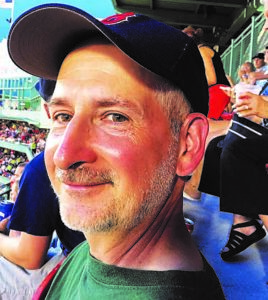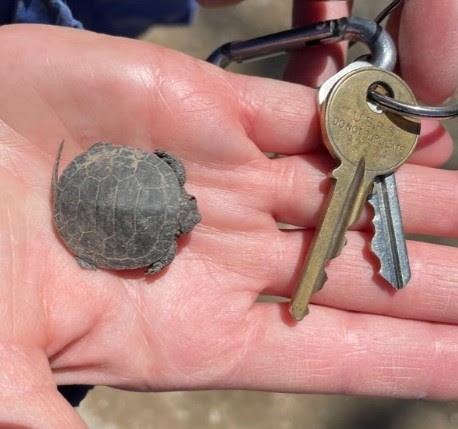By Don Rush
Special to the Clarkston News
Having witnessed a growing distrust of scientists by the general public over issues like climate change, vaccinations, environmental pollution, and the origin of COVID-19, area resident Larry Kodosky decided it was time to get involved.
Kodosky, who lives with his wife Sylvia in the middle of Brandon Township, said April is Global Citizen Science Month.
“I’m promoting Global Citizen Science Month, and citizen science in general, because most people don’t realize they don’t need a degree to make observations and contributions to our scientific knowledge,” said Kodosky. “Only a curious mind is required.”
Kodosky taught courses in natural sciences, chemistry and geology full-time at the college level for 33 years, the last 31 at Oakland Community College’s Auburn Hills and Highland Lakes campuses.

“I earned B.S., M.S., and Ph.D. degrees in geosciences,” he said. “One of the courses I taught was essentially a ‘scientific literacy course.’ It examined fundamental and relevant topics in five natural science disciplines (astronomy, biology, chemistry, ecology/environment, and geology). The average person, no fault of their own, until instructed, doesn’t understand the relevance of science and the impact of science and technology on their daily lives. Science is really just the pursuit of knowledge and understanding of the natural world around us.”
Kodosky, who retired in the fall of 2021, said the goal of the Global Citizen Science Month project is to promote public participation in science in meaningful ways. The information gathered collectively by citizens and scientists can identify and help solve local, national, and global problems.
He said there are “thousands” of outdoor and indoor, fun and engaging citizen science projects available for all ages (young children through the elderly), physical abilities, and interests. Individuals or groups can also create and list their own projects. Some projects include identifying different types of galaxies from space telescope images, reporting changes in weather and climate in your area, categorizing life activities in Michigan during the first half of the 20th century from postcard photographs, and identifying and classifying dolphin vocalizations.”
“I believe the citizen science projects are also a way to forge bonds among the participants, and they allow the participants to feel like they’re contributing to the common good. I guess I’m also promoting citizen science to help dispel some misconceptions. People tend to distrust what they don’t know or understand.
“Hopefully, those who participate in a citizen science project will realize that the vast majority of scientists are conscientiously attempting to improve our knowledge base so we’re better equipped to solve current and future social, economic, medical, and environmental problems.”
He said the websites citizensciencemonth.org and zooinverse.org are “excellent” resources to search for a citizen science project. Individuals or groups can register their original projects or events at the website scistarter.org. Smartphone applications for citizen science also exist. As an example, he said, birders may use apps like Merlin or eBird, developed by the Cornell Lab of Ornithology, to identify birds and report their sightings. Scientists use this information to monitor bird populations and to identify challenges different species face as habitats and climates change.
“Since I retired, I spend more time outdoors. My wife and I take walks around Hummer Lake and nearby areas. There are a few things I’ll do when I’m outside during Global Citizen Science Month,” he said “I’ll be using the eBird app to report my bird sightings and counts to researchers.”
eBird users, he added, have reported 167 bird species at Independence Oaks County Park on Sashabaw Road.
PHOTO: A newly hatched Painted turtle Larry and Sylvia Kodosky discovered while enjoying the outdoors. According to Kodsky, Painted turtles have lifespans between 50 and 55 years. Photo: Kodosky Family

